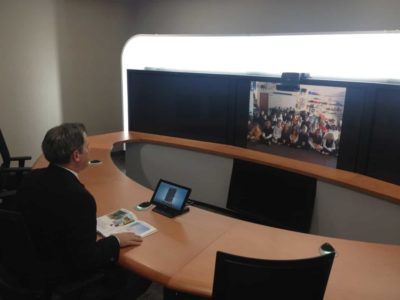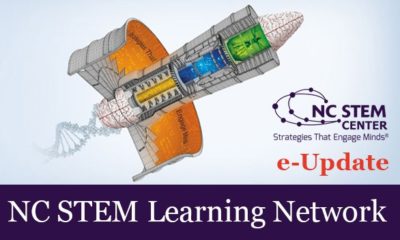
In 2009, public school stakeholders determined that the economic challenges of the Great Recession were not going to prevent North Carolina from fulfilling its constitutional duty to its students.
When the Federal Recovery Act included $4.35 billion to be distributed to select states on a competitive basis, North Carolina leaders saw an opportunity to not simply maintain the status quo amid dwindling education resources, but to continue to improve educational opportunities throughout the state.
The Recovery Act’s Race to the Top (RttT) initiative was designed to: Encourage conditions for education innovation and reform; improve student outcomes by making substantial gains in student achievement, close achievement gaps, improve high school graduation rates, and ensure student preparation for success in college and careers.
To apply for RttT funds, state education leaders developed ambitious plans in four areas of education reform:
- Adopting standards and assessments that prepare students to succeed in college and the workplace and to compete in the global economy
- Developing effective ways to measure student growth and success that help educators identify ways to improve instruction
- Recruiting, training, rewarding, and retaining effective teachers and principals, especially in high-needs schools
- Turning around the lowest-achieving schools
“State dollars were scarce for anything other than holding our own during this time,” said State Superintendent of Public Instruction June Atkinson. “We had the ideas and momentum. Race to the Top helped us go faster and farther with the initiatives we needed to undertake.”
The various programs and projects of Race to the Top were focused on a critical objective — to provide teachers and school administrators with the tools they needed, from instructional to institutional support, to be effective in the classroom and efficient in administration.
“I wanted to build a statewide instructional improvement system that would be the go-to place for every teacher in the state who was struggling for student success,” Atkinson said. “Today we have that with Home Base.”
Without Race to the Top resources, it would have been difficult to increase training opportunities to help educators transition to a new statewide Standard Course of Study. “It was not until Race to the Top that we had money that was necessary to move teachers from old standards to new standards,” said Atkinson. Race to the Top lifted the burden of finding resources for professional development that would have fallen on local school districts.
Adam Levinson, director of Race to the Top for the N.C. Department of Public Instruction, said the program has helped public schools by:
- Raising standards for teacher and student performance
- Providing five years of targeted professional development and other support to help educators understand how to help students meet the new, higher learning standards
- Giving all teachers advanced, integrated technology tools to help teachers manage their planning, teaching, and assessing of student learning
- Ensuring that every educator has structured, objective feedback about his or her students’ academic growth to inform the efforts to improve his or her practice
- Helping the persistently lowest-achieving schools develop capacity to promote sustained, improved student performance
“Race to the Top enabled the Department of Public Instruction to employ people who provide direct support to schools and districts, around the clock and throughout the school year,” said Levinson.
North Carolina’s Race to the Top efforts rest on four basic planks:
Home Base: Digital classroom management tools and instructional resources for teachers, students, parents, and administrators. The Home Base suite includes student performance data and teaching and learning resources. This secure and comprehensive suite of digital tools provides educator evaluation and professional development resources that save teachers time and offers quick and easy access to online learning resources aligned with North Carolina’s Standard Course of Study.
The North Carolina Education Cloud: A reliable, accessible data network infrastructure that supports public schools statewide. The Cloud frees local schools from maintaining data networks by moving that data to a state-centered cloud-hosted infrastructure. The North Carolina Education Cloud provides every school district with:
- Access to compute and storage resources
- Consistent availability, reliability, and performance
- Common infrastructure to support emerging instructional and data systems
- Sustainable and predictable operational cost
Professional Development: Educators have the tools and opportunities to be knowledgeable of new standards, assessments, data systems, educator evaluations, technologies, and overall expectations so they can apply that knowledge to their day-to-day professional practices.
Turnaround of Low-Performing Schools: Turnaround of the lowest five percent of conventional elementary, middle, and high schools, based on a 2009-10 performance composite and grade span; turnaround of conventional high schools with a four-year graduation rate below 60 percent in 2009-10, or either 2008-09 or 2007-08.
“By providing funding to upgrade schools and the public institutions that support them, Race to the Top helped North Carolina continue to make progress and improve public education at a time when the Great Recession threatened to stall or even roll it back,” Atkinson said.




